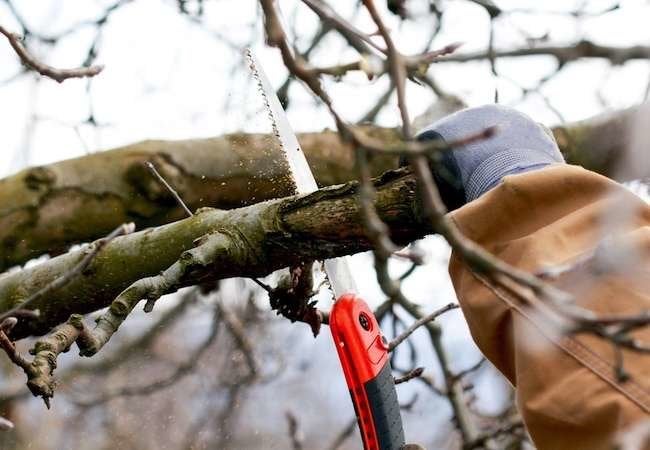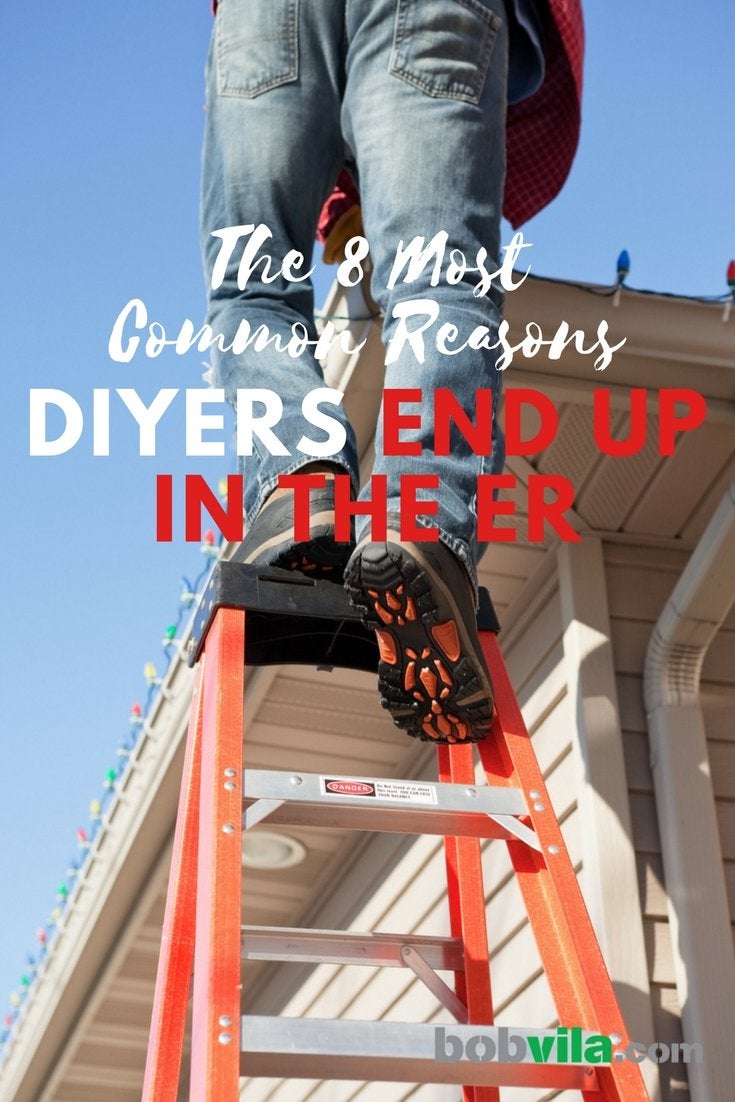We may earn revenue from the products available on this page and participate in affiliate programs. Learn More ›
Falls
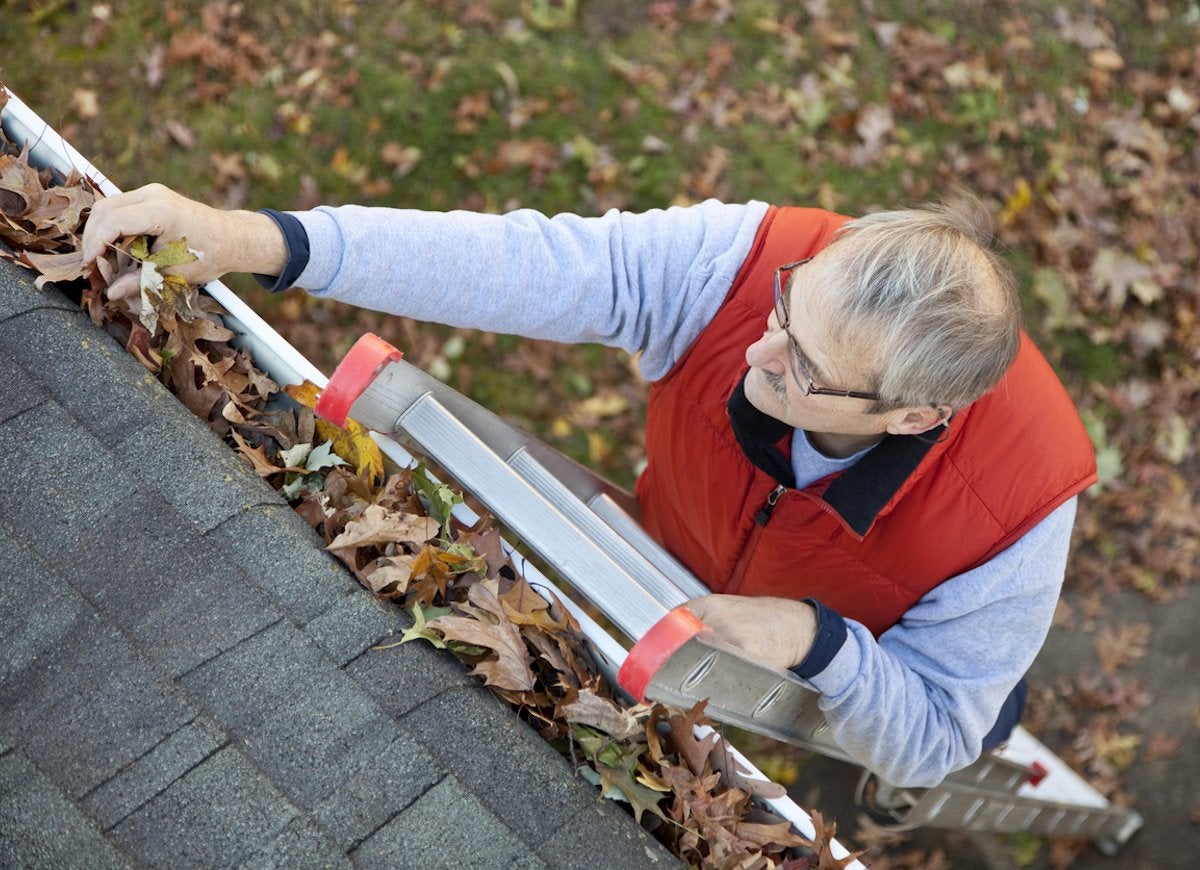
Gutter cleaning, roof repair, tree trimming, and even changing a light bulb often require the use of a ladder, and it’s the ladder that makes these jobs dangerous. Indeed, according to the National Safety Council, about 9 million nonfatal falls were treated in emergency departments in 2012, accounting for 30 percent of injury-related ER visits. To minimize your risk of injury, always position ladders on firm, level ground, make sure A-frame ladders are fully extended before you step on them, use a safety harness or spotter whenever possible, and choose the right size ladder for the job.
Related: 11 Ticking Time Bombs in Your House—and What to Do About Them
Falling Objects
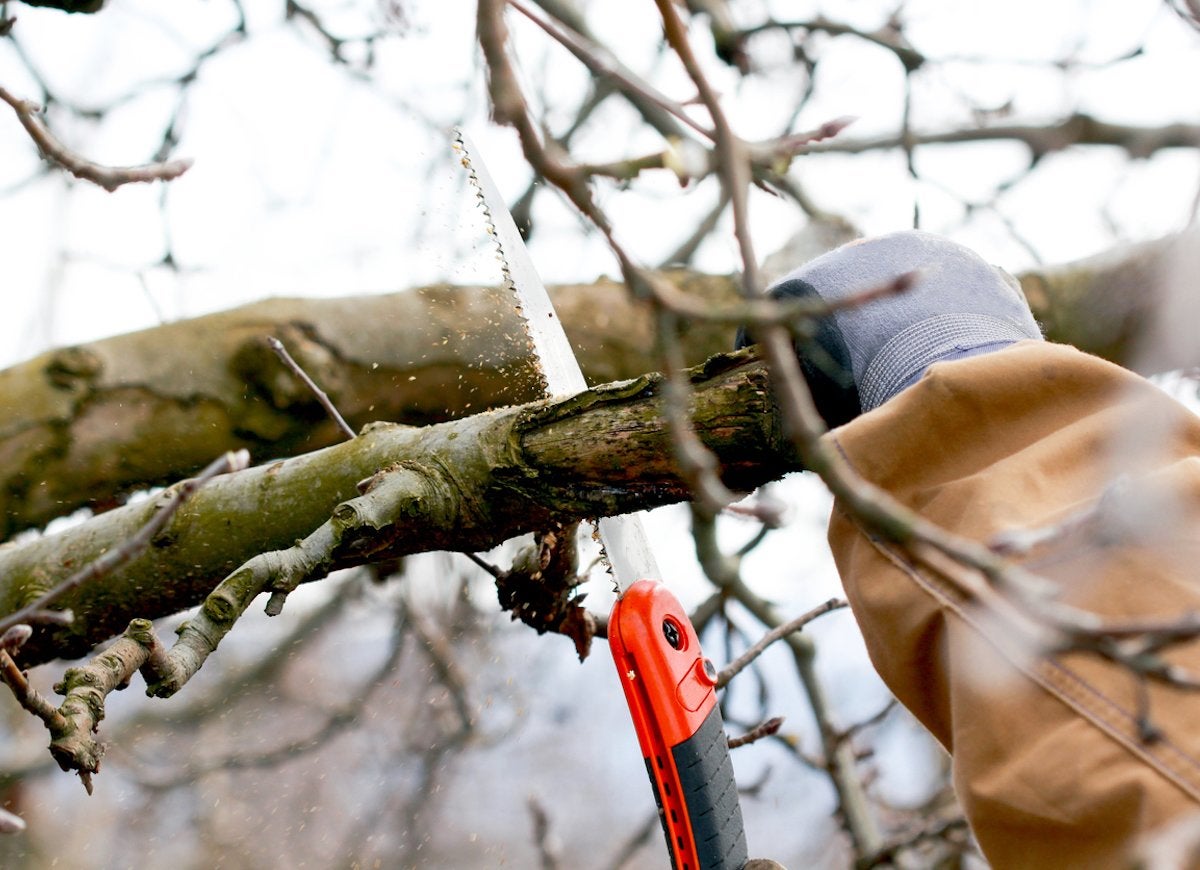
Pruning a tree can be a dangerous business—and not just when ladders are involved. Especially when you’re working with larger branches that can crack or break in unexpected places, falling tree limbs are a real threat. Similarly, roof and siding repairs, chimney maintenance, and gutter repairs can put you at risk of being hit by falling objects like loose shingles and shakes, bricks, or metal. To decrease your chance of being hit, try not to stand directly underneath items that may drop in the course of your work, and have a spotter on the job who can warn you if things begin to loosen or fall.
Related: 16 Home Improvements and Repairs That Are Best Not to DIY
Cuts
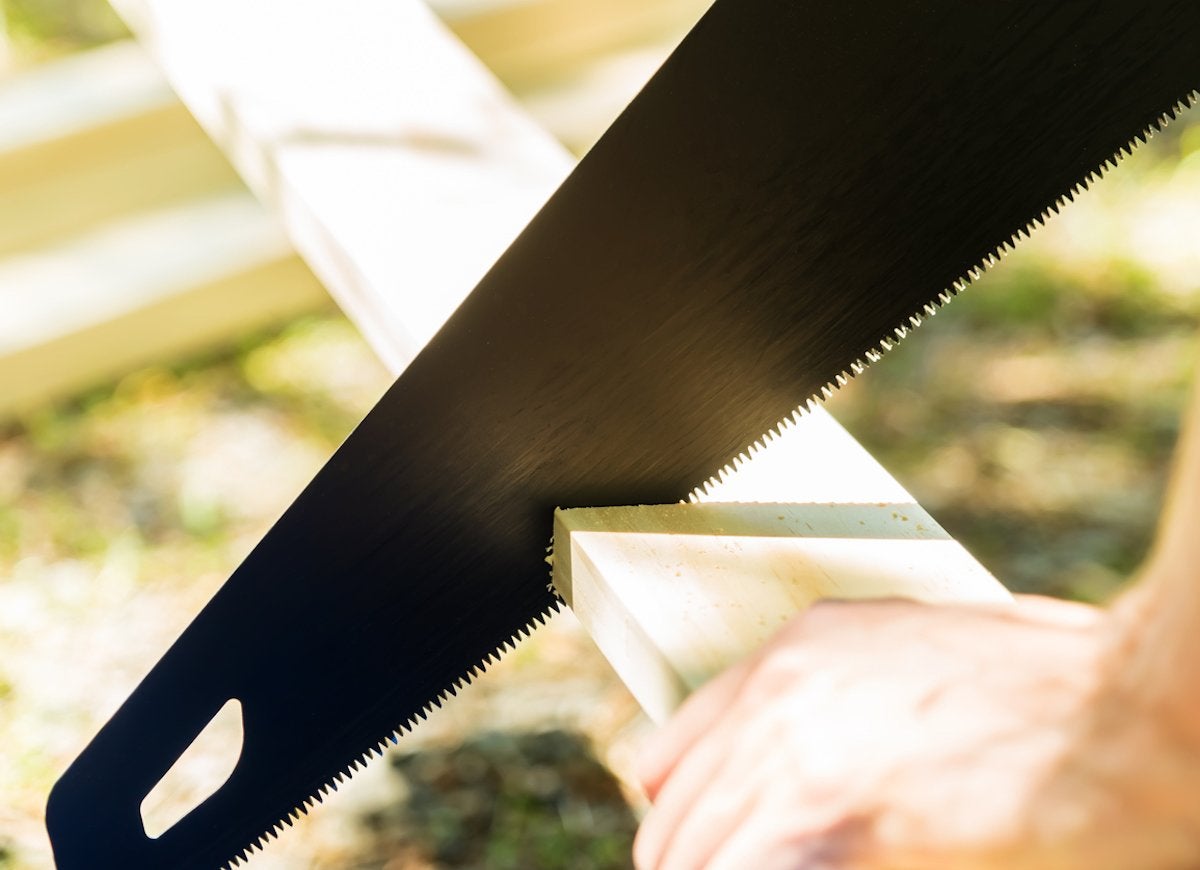
When working with dull saws, pruners, scissors, or knives, you tend to press down harder than normal, which makes you more likely to slip and cut yourself. Before you start your next project, make sure your tools are properly sharpened and all fasteners are tight. Consider wearing heavy-duty work gloves that can provide some protection against nicks and surface cuts.
Related: The 25 Smartest and Smallest DIYs You Can Do for Your Home
Eye Injuries
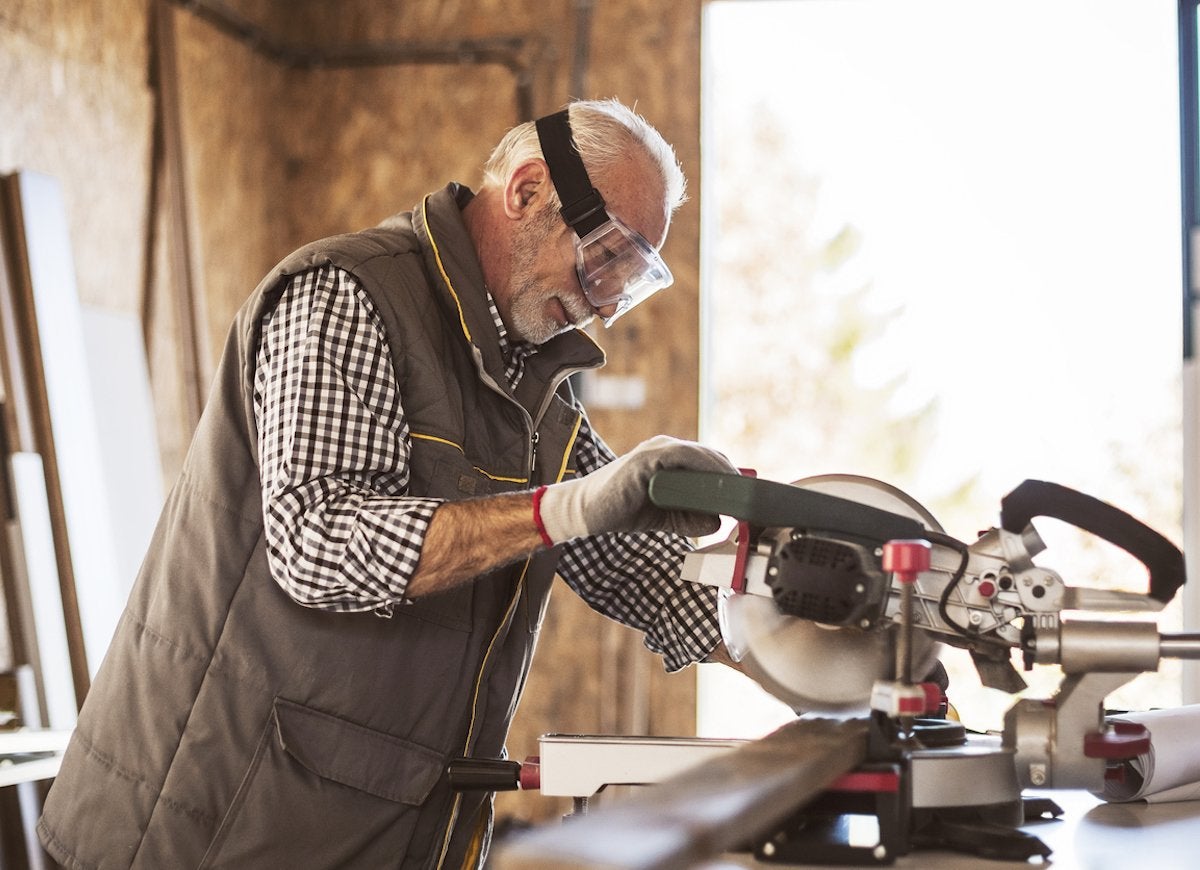
You get only one set of eyes, and they’re extremely vulnerable to dust, debris, and fumes that can be kicked up during a DIY project. That’s why it’s essential to wear eye protection when working with power saws, sanders, lawn mowers, and other mechanical equipment.
Poisoning
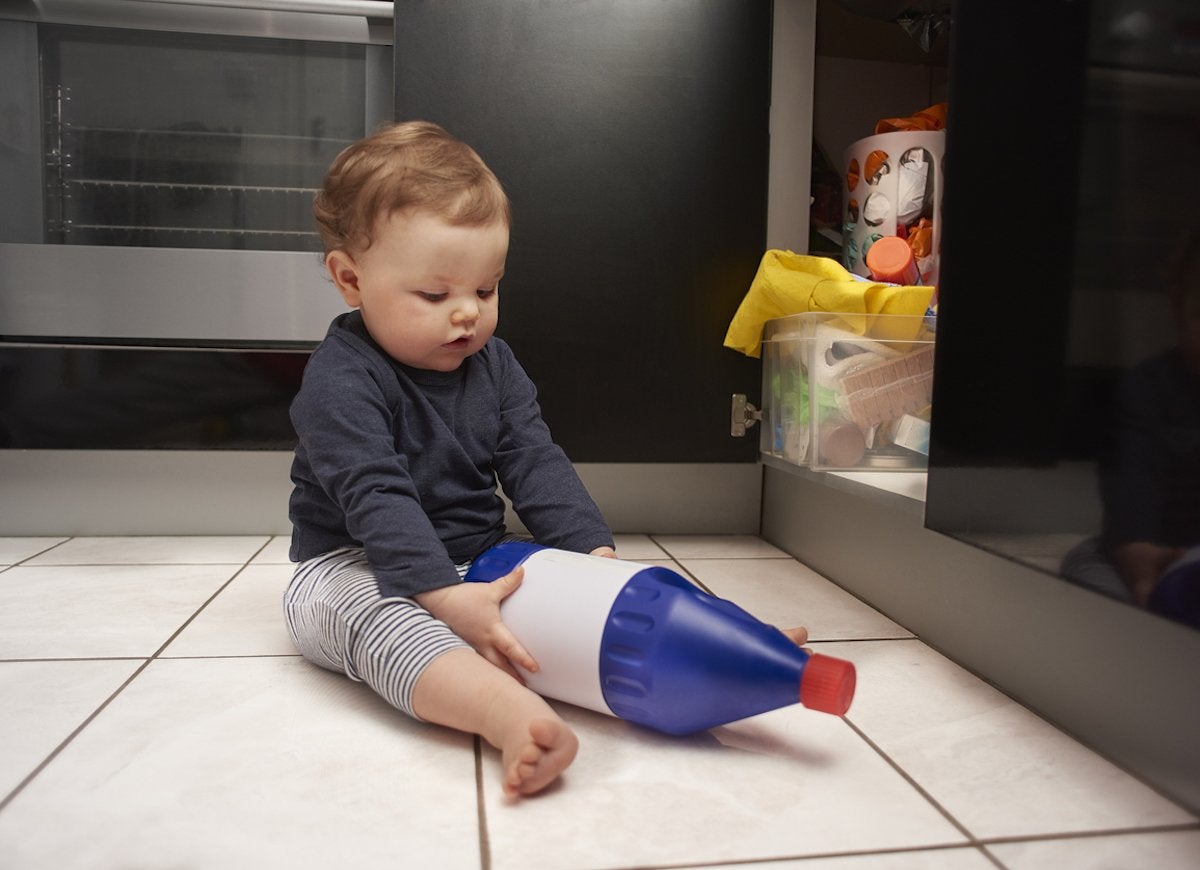
Common household chemicals like ammonia, bleach, pesticides, and herbicides all contain toxic substances that can poison children, adults, and pets. Poisoning accounts for 2.2 percent of injury-related emergency department visits, according to the National Safety Council, and poisoning, depending on the substance and amount consumed, can be fatal. Reduce your family’s risk by following the manufacturer’s recommendations for proper use and storage of household chemicals and, when possible, opt to buy or make less toxic versions of everyday cleaners.
Slipping
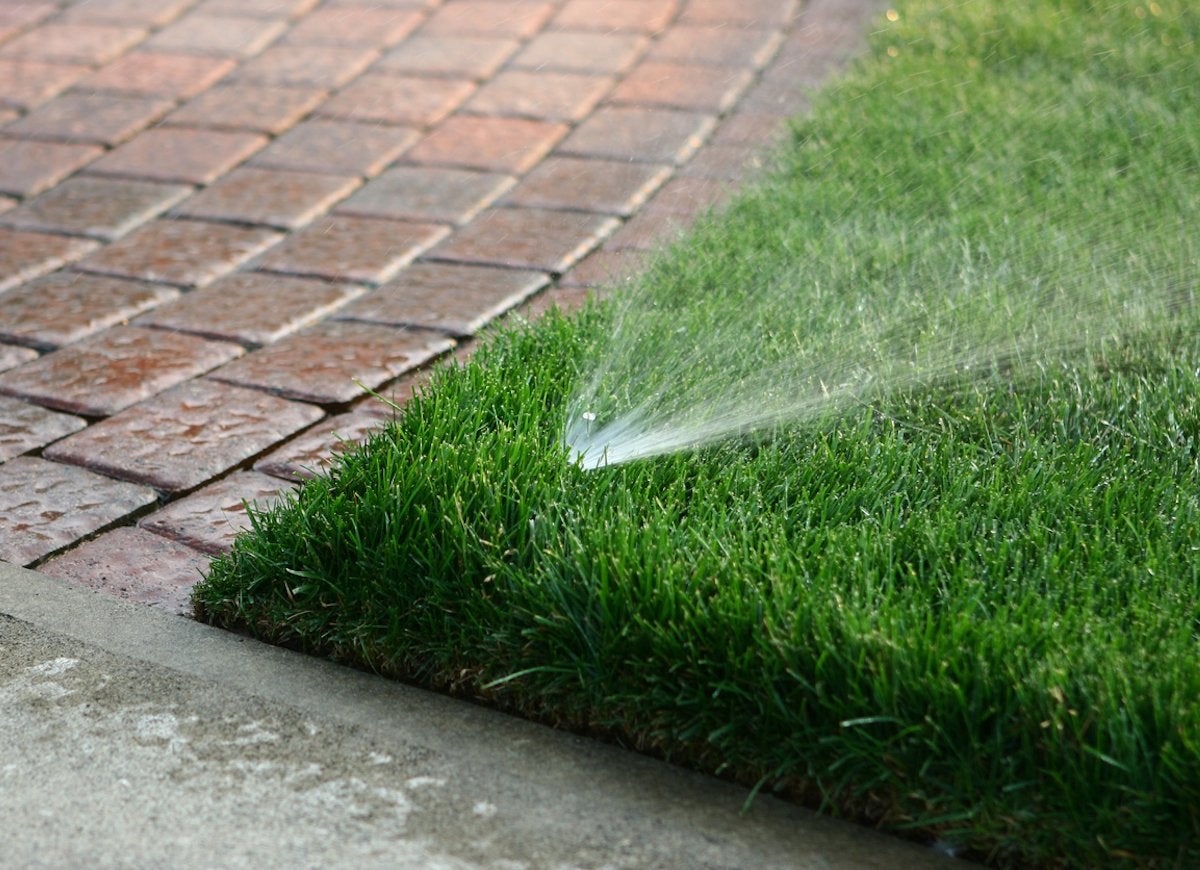
Whether it’s a patch of ice in the winter or a puddle near the sprinkler in summer, water in all its forms increases the risk of slips and falls. Minimize your risk of injury by exercising care when shoveling snow from walkways and driveways in winter. To prevent water from collecting around pools, spas, or irrigation systems, identify any low spots on your property where excess water forms puddles, then fill those spots in with cement patch, soil, or nonskid mats.
Insect Bites and Stings
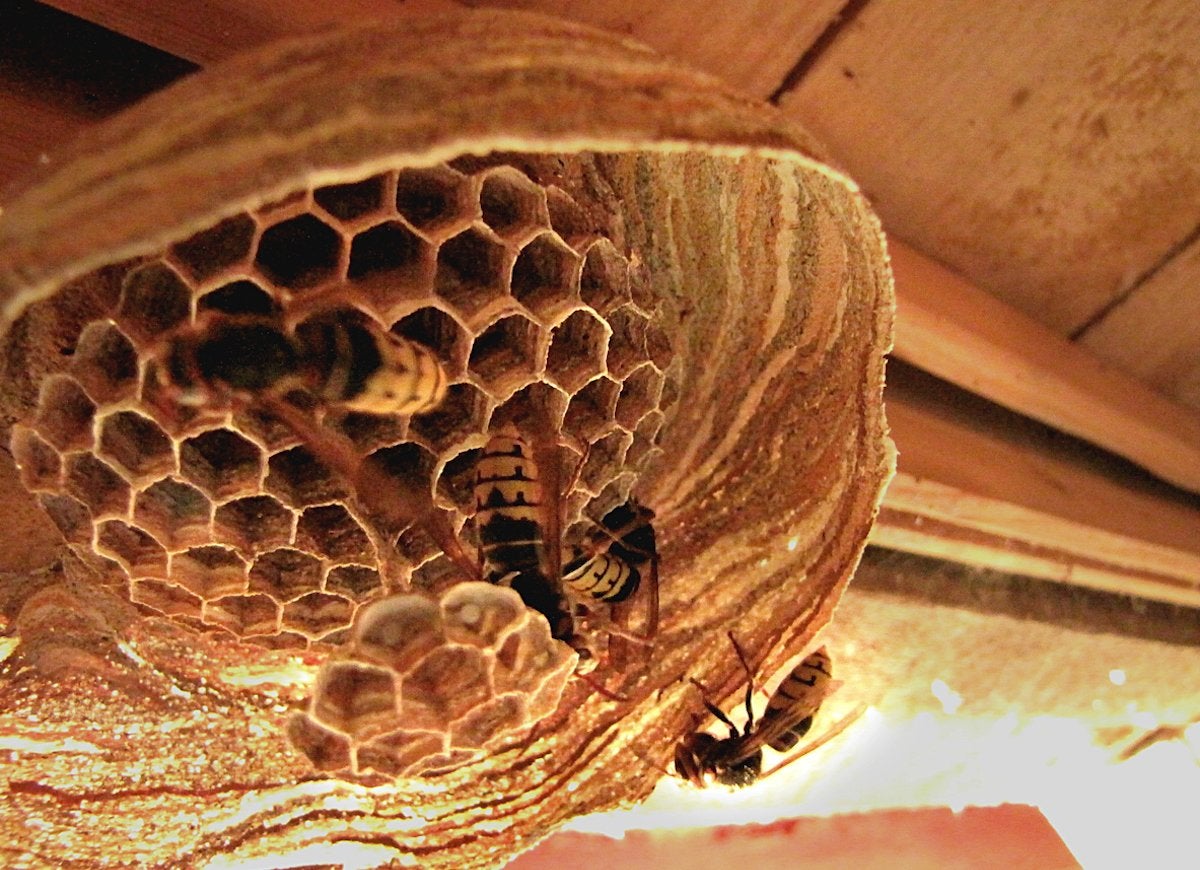
Stings from bees, wasps, yellow jackets, or ants are painful, but they can also be dangerous. According to the Centers for Disease Control, about 2 million Americans are allergic to the venom from stinging insects, and allergic reactions can become more severe with subsequent stings. Protect yourself and your family by minimizing exposure to stinging insects and leaving their nests alone if you spot them under the eaves, deck railings, or porch. Most ants and bees will avoid you if you leave them alone, but if you’re dealing with more territorial species like yellow jackets and hornets, you may want to consider calling in a professional. If you have been stung, know the signs of a severe allergic reaction: difficulty breathing, hives, swelling of the face and throat, wheezing, rapid pulse or drop in blood pressure, and dizziness or fainting. If you notice any of these signs, call for medical help right away.
Burns
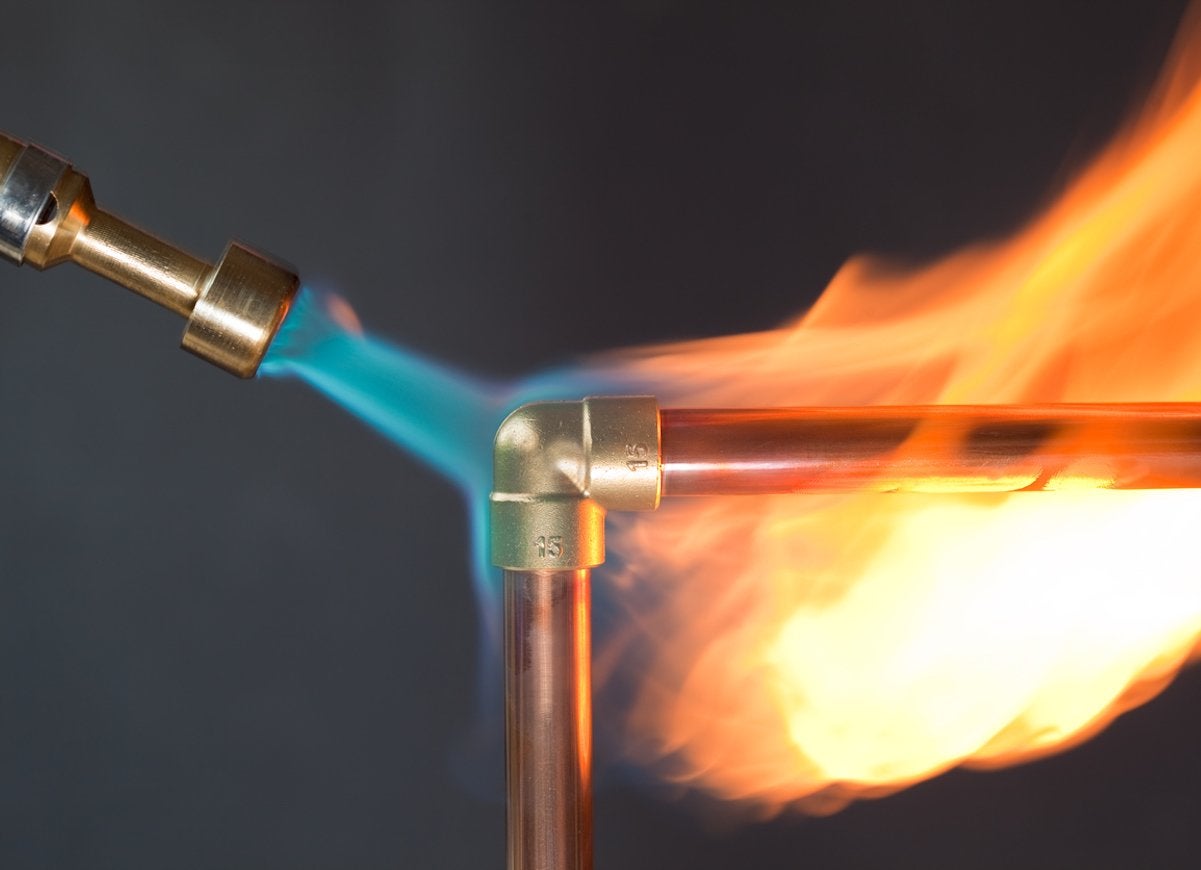
Working with fire, electricity, or large machinery can result in burns, and every year, a half-million people nationwide seek medical attention for burns, according to the National Institutes of Health. Prevent injury by wearing protective gear, especially good work gloves, and keep a bucket of ice water nearby to minimize the damage if you do get burned. And of course, if you aren’t comfortable with or knowledgeable about a job, it’s best left to a professional.

Everything You Need for a Lush and Healthy Lawn
Keeping your grass green and your plants thriving doesn’t just take a green thumb—it starts with the right tools and supplies.

